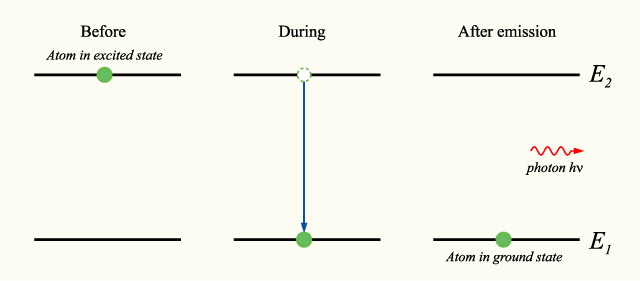LEDs: An In-Depth Look
LED–Light Emitting Diode
semi conductor light source
an optoelectronic
optoelectronics -> study and application of electronic devices that source, detect, and control light (gamma, X-rays, UV, IR)
When a light-emitting diode is switched on, electrons are able to recombine with holes within the device, releasing energy in the form of photons
recombine -> radiative recombination/spontaneous emission process by which a light source (ie electron) in an excited state undergoes a transition to the ground state and emits a photon



 http://en.wikipedia.org/wiki/Radiative_recombination
http://en.wikipedia.org/wiki/Radiative_recombination
holes -> more of a concept; describes the lack of an electron at a position where one could exist in an atom.
When an electron leaves a helium atom, it leaves an electron hole in its place. This causes the helium atom to become positively charged
http://en.wikipedia.org/wiki/Electron_hole
photon -> A quantum (bundle or packet) of electromagnetic energy (light)
http://www.pcmag.com/encyclopedia_term/0,2542,t=photon&i=49210,00.asp
referred to as electroluminescence
electroluminescence -> a material emits light in response to an electric charge passed through it.
the color of the light corresponds to the energy of the photon, and is determined by the energy gap of the semiconductor.
energy gap -> energy difference between the top of a valence band and the bottom of the conduction band
http://www.wordiq.com/definition/Band_gap
lower energy consumption, longer lifetime, smaller size, faster switching, greater durability and reliability than incandescent lights
better at placing light in a single direction
